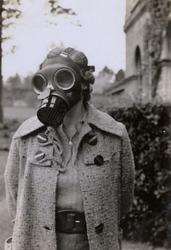Asbestos in Antiques
Back in 1999, the UK’s blanket-ban on asbestos came into force.
For decades, asbestos was favoured for its fire-retardant properties, and its ability to act as an insulator. Up until the late 1970s, it was still used in products used to help you get ready in the morning, help grow plants in your garden, and even cook your food.
It eventually became clear that asbestos could be extremely harmful if fibers are inhaled. Today then, you would be forgiven for thinking the products you buy, and those already in your home, are free of asbestos. As it turns out, there are a number of everyday items that may still contain the substance.
Wincanton Auctions will generally decline to offer the following types of items for sale unless completely satisfied that no element of Asbestos forms part of the item.
1. Vintage Hairdryers
Up until as recently as 1980, asbestos was found in most handheld hairdryers.
2. Gas Masks
The vast majority of WW2 gas masks contain asbestos in the filter, quite often blue asbestos, a category one carcinogen.
“Over time two things happen – firstly asbestos changes to become finer, the dust is able to pass through gas mask filters more easily, and is sometimes found in gas mask cases. Secondly, the structural integrity of the mask degrades, filters collapse, steel canisters corrode and hoses split. This results in asbestos being released from the mask and contaminating the surroundings, and anyone wearing the mask, however briefly, is at high risk of inhaling the asbestos fibres.”
4. Vintage Small appliances
Historically, asbestos was used in small household appliances such as coffee pots, irons, and toasters. These products are potentially harmful as they may release asbestos fibers when disassembled. You also run the risk of asbestos exposure through frayed wires. Antiques and collectors should pay close care when handling old toasters and irons etc.
5. Vintage Heaters
One of the reasons asbestos was so widely used ahead of its ban was because it was heat resistant.


